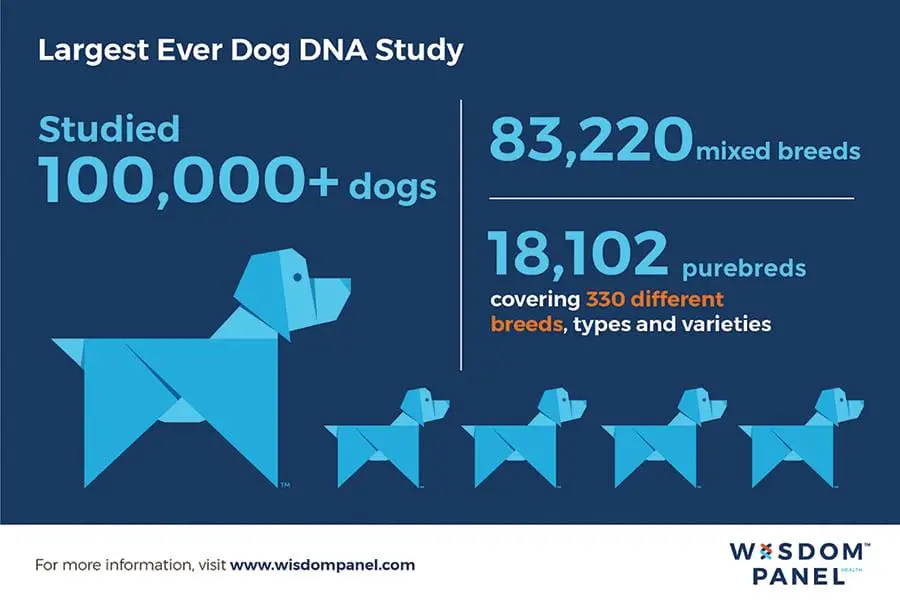Introduction
The topic of why dogs give birth to litters is a fascinating one for dog owners and breeders alike. Understanding the evolutionary factors, biological processes, and genetic components behind litters provides insight into canine reproduction and maternal behaviors.
Litters allow dogs to produce multiple offspring at once, unlike humans who typically give birth to one baby at a time. The number of puppies in a litter varies by breed and other factors, but litters give dogs an evolutionary advantage to continue populating the species. Examining the gestation period, maternal instincts, and genetics behind litters reveals the complex capabilities of canines.
In this article, we will explore the multifaceted question of why dogs give birth to litters instead of single offspring. Discovering the science and adaptations behind this reproductive strategy opens doors to better breeding practices and appreciation of canine maternal abilities.
Evolutionary Advantages
Having large litters provides several key evolutionary advantages for dogs that have helped the species thrive over time. By giving birth to multiple puppies at once, a female dog is able to pass on her genes to a larger number of offspring with each pregnancy. This increases the spread of her genetic material and improves the overall survival chances for her lineage.
Additionally, having larger litters helps preserve genetic diversity within the breed. With each litter containing a mixture of puppies with slight genetic variations, no single puppy represents the full genetic makeup of the parents. This protects the breed from a lack of variability, which could lead to health issues and lack of adaptability.
Large litters also help compensate for the loss of some puppies due to environmental factors like disease, predators, accidents, or lack of resources. Not every puppy will survive to adulthood and reproduce. By having many puppies at once, the overall chances of passing on their genes increases despite some not making it to breeding age.
Overall, the evolutionary advantages of having large litters have been a successful reproductive strategy for dogs over centuries and have ensured the continued survival and thriving of the species.
Gestation Period

The typical gestation period for dogs is around 63 days or 9 weeks from the time of breeding. This is how long dogs are pregnant before giving birth to a litter of puppies. The gestation period can vary slightly depending on the breed and size of the dog, but most fall within a range of 58-68 days.
Smaller breeds like Chihuahuas and toy poodles tend to have slightly shorter gestation periods closer to 58-60 days, while larger breeds like Great Danes and Mastiffs may carry puppies for 65-68 days. The average across all breeds is right around 63 days from conception to birth.
During this 2 month pregnancy, the fertilized eggs travel to embed themselves in the lining of the uterus, the puppy embryos develop rapidly, and the mother dog’s body undergoes many changes to prepare for nursing a litter after birth. Knowing the typical gestation period helps breeders and veterinarians monitor a dog’s pregnancy timeline and health.
Uterine Horns
The uterus of a female dog consists of two long, slender tubes called uterine horns. Dogs have what is known as a bipartite uterus, meaning their uterus has two uterine cavities.
The uterine horns play a key role in enabling dogs to have litters of puppies. Each uterine horn has the capacity to support multiple embryos at the same time, which is why female dogs can have several pups in a single litter.
When a female dog ovulates, her eggs travel from the ovaries down the oviducts and into the uterine horns. If the eggs are fertilized by sperm, they will implant and develop as embryos within the uterine horns.
The two uterine horns allow individual embryos to have plenty of space to implant and grow during gestation. This anatomical adaptation allows dogs to have larger litters compared to species that only have a single uterine cavity.
Ovulation

Dogs ovulate multiple eggs during their heat cycle, which leads to litters. Female dogs go into heat approximately twice a year and release a group of eggs during the most fertile point in their cycle. The release of multiple eggs is called ovulation. This occurs around 9-11 days after the onset of heat. During this ovulation period, there can be anywhere from 5 to 10 eggs released at one time. Since dogs mate repeatedly when the female is in heat, sperm can fertilize multiple eggs, leading to a litter of puppies rather than a single puppy. The number of eggs released depends on the breed and size of the dog. Smaller breeds tend to release fewer eggs, resulting in smaller litters on average. Larger breeds release more eggs, which is why they typically give birth to larger litters. But in all cases, it’s the fact that dogs ovulate and release multiple eggs that allows them to have litters of puppies rather than single births like humans.
Maternal Care
Dog mothers demonstrate remarkable maternal instincts and care when raising large litters of puppies. After giving birth, the mother licks each puppy to remove fluid from its nose and mouth to help it breathe. She then chews through the umbilical cord and eats the afterbirth, which provides vital nutrients and helps clean the whelping area. The mother continues licking and cleaning the puppies for several days, providing essential maternal bonding and prompting them to urinate and defecate.
The mother dog keeps the puppies warm by curling her body around them or lying on her side so they can nurse. Puppies cannot regulate their own body temperature for the first few weeks, so the mother’s body heat is crucial for their survival. She nurses the puppies every 1-2 hours, allowing each one to suckle. The mother produces milk rich in fat and nutrients to fuel the puppies’ rapid growth.
In the first few weeks, the mother dog stimulates urination and defecation by licking the puppies’ genital areas. She cleans up all waste to keep the whelping area sanitary. The mother monitors each puppy closely and may move them around gently with her mouth to ensure they are safe and feeding properly. She provides constant care and attention to help the puppies grow and thrive during this critical developmental stage.
Litter Size

The average litter size for dogs is between 4-6 puppies. However, the number of puppies a dog has can vary greatly depending on the breed and other factors.
In general, larger dog breeds tend to have larger litters on average. For example, Golden Retrievers average 8 puppies per litter while Chihuahuas average just 2-5 puppies per litter. This is likely due to larger dogs physically being able to carry more puppies during pregnancy.
A dog’s nutrition during pregnancy also impacts litter size. Making sure a pregnant dog receives proper nutrition with extra calories, proteins, calcium, and vitamins can help maximize litter size. Older dogs and dogs in poor health may also have smaller litters.
The number of puppies is also linked to genetics. Some dogs are genetically predisposed to having larger litters. Timing of breeding around peak fertility can also increase litter size.
While individual litters can vary, the average litter size gives a good indication of what is typical for a breed. Larger dogs tend to have more puppies, while smaller dogs tend to have fewer. Proper health and nutrition help optimize litter size as well.
Breed Differences
There is significant variation in average litter sizes between different dog breeds. Small breeds tend to have smaller litters, while larger breeds can have litters with over 10 puppies. For example:
- Chihuahuas average just 2-5 puppies per litter
- Yorkshire Terriers average 3-5 puppies per litter
- Dachshunds average 4-6 puppies per litter
- Labrador Retrievers average 7-10 puppies per litter
- Great Danes average 8-12 puppies per litter
The size of the breed correlates with litter size, as larger dogs generally have more room in their uterus to carry more puppies. Genetics also play a role, as some breeds have been selectively bred to produce smaller litters while others produce larger litters. Overall, the breed of the dog is a major factor in determining average litter size.
Genetic Factors
There are several genes that have been identified that influence litter size in dogs. One of the most significant is IGF1, which codes for insulin-like growth factor 1. Variants of this gene have been associated with smaller litter sizes in several dog breeds. Specifically, a variant called IGF1 B has been shown to reduce litter sizes by around 1 puppy on average compared to other variants like IGF1 A.

Another gene that appears to play a role is BMP15, which is related to ovulation rate. Variants of this gene, such as BMP15 C, are associated with smaller litter sizes across multiple dog breeds. Researchers believe this is because it leads to fewer mature eggs being released during ovulation.
Additionally, studies have found that genetic factors account for around 25-40% of the differences in litter size between individual dogs. So while environment plays a role, genetics makes a significant contribution as well. Selective breeding over generations has likely amplified certain genetic variants that produce larger litters in some breeds. Overall, litter size is a complex polygenic trait influenced by many genes working together.
Conclusion
In summary, there are several key evolutionary reasons why dogs typically give birth to litters rather than single puppies. The main advantages of having larger litters include:
- Increasing the chances of survival and passing on genes – With multiple offspring, if one puppy dies, others may still survive.
- Diversity within the litter – More genetic variety makes it more likely some offspring will be well-adapted to the environment.
- Earlier reproductive maturity – More resources going to a litter allows puppies to grow faster and breed sooner.
Additional factors that enable dogs to successfully bear and raise litters include: their shorter gestation period; having two uterine horns to allow for multiple fetuses; increased ovulation of eggs during estrus; and maternal behaviors to care for multiple puppies. While specific litter sizes and traits vary by breed, the evolutionary advantages of litters are clear. Understanding why dogs give birth to litters provides insight into their reproductive strategies and adaptations.